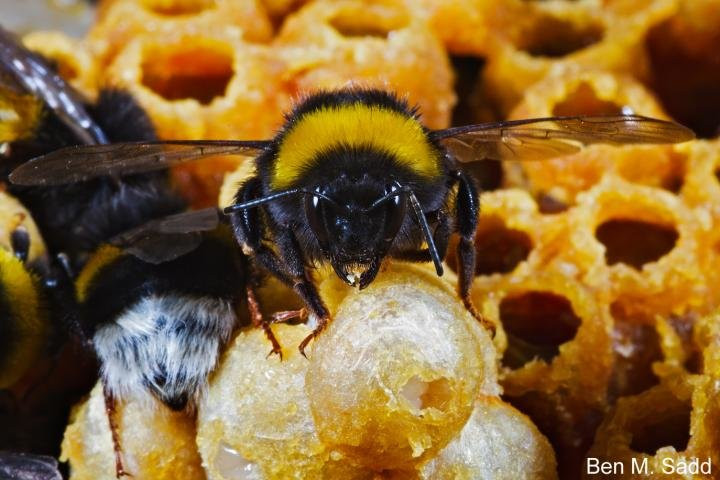Pollination interrupted: How the bumblebee genome study can help

The genomes of two important pollinating bumblebees have been sequenced and compared with those of other bees to help conserve the species, invaluable in maintaining biodiversity and in pollinating both wild and food crops.
Bees and other pollinating insects are important for increasing crop yields -- their value has been estimated to be worth at least €153bn (£109bn, $167bn) per year globally.
An international study of 41 crop systems on six continents conducted last year showed that healthy populations of wild bees are key to successful yields of crops ranging from pumpkins to grapefruit.
Wild bees also have been declining in many places across the globe. Bumblebees and solitary bees comprise the wild bee population.
The latest genome studies will help scientists understand what the risks from diseases and pesticides are for these pollinators.
The genome sequence and analysis of two key bumblebee species -- the European buff-tailed bumblebee called Bombus terrestris, and the North American common eastern bumblebee called Bombus impatiens -- were published in two articles in the journal Genome Biology.
On comparison with the honeybee genome, researchers saw many conserved similarities as well as differences.
By comparing the bumblebee immune genes with the honeybee's, researchers hope to study the different pressures exerted by pathogens and pesticides on both.
Pesticide link
Research have already begun looking at whether neonicotinoids, or neonics, a class of pesticide seen as a threat to bees, may suppress the immune system of bees.
In a most comprehensive study of the effects of neonics, 29 scientists last year reviewed more than 800 scientific reports issued over the past five years to conclude that neonics are a key factor in the decline of wild bees. Neonics act on the nervous systems of insects.
Neonics are systemic pesticides and stay with the plant as it grows once applied as seed treatments, to roots, or into tree trunks.
While this greatly reduces the potential for human exposure, it raises questions about the potential for damage on birds and bees exposed through nectar, pollen or even leaf surface moisture.
A Lund University study had in fact implied that wild bees actually stayed away from pesticide treated crop. Honeybees surprisingly were not affected.
More recently, scientists at Newcastle University and Trinity College Dublin discovered that bumblebees are attracted to nectar containing common pesticides.
Earlier studies have indicated that the bees are unable to discern the pesticide but this study points to bees actually seeking pesticide contaminated crops.
In April 2013, the EU introduced a temporary ban on the use of neonicotinoid pesticides on crops that bees are attracted to. But the latest study shows the bees could seek out contaminated crops even if provided with alternatives.
The UK's Food and Environment Research Agency claimed in a study that neonics are harmful in rare instances only. The study has since been challenged.
The genome sequence will help identify the risk factors faced by these crucial pollinators.
© Copyright IBTimes 2025. All rights reserved.





















